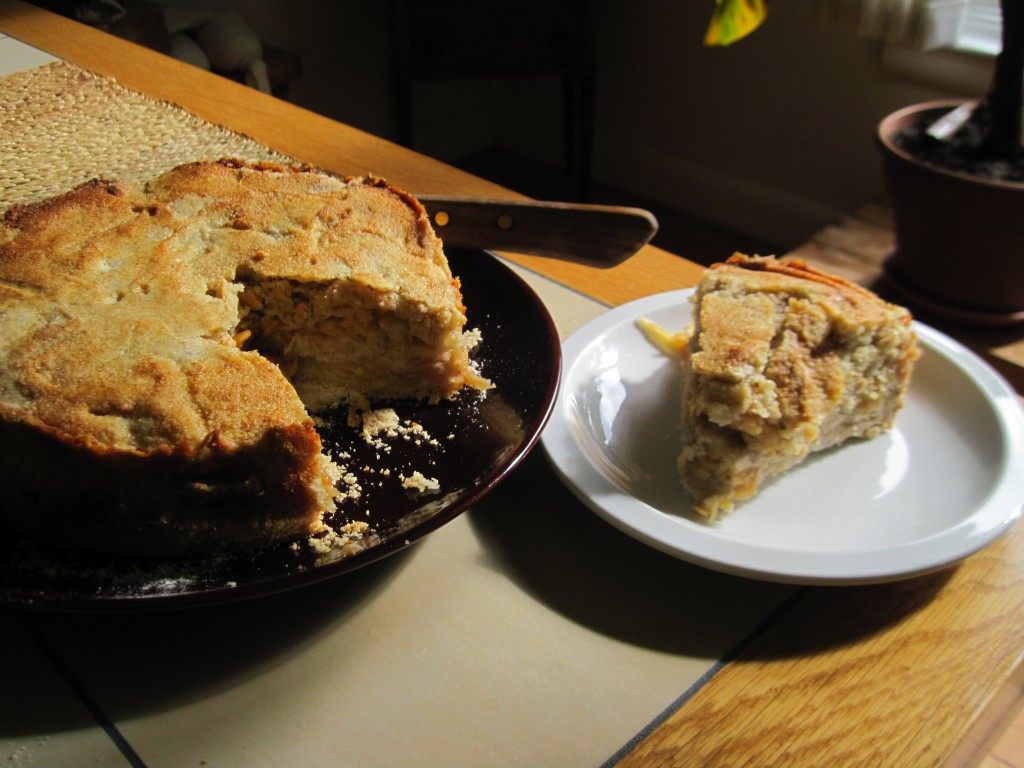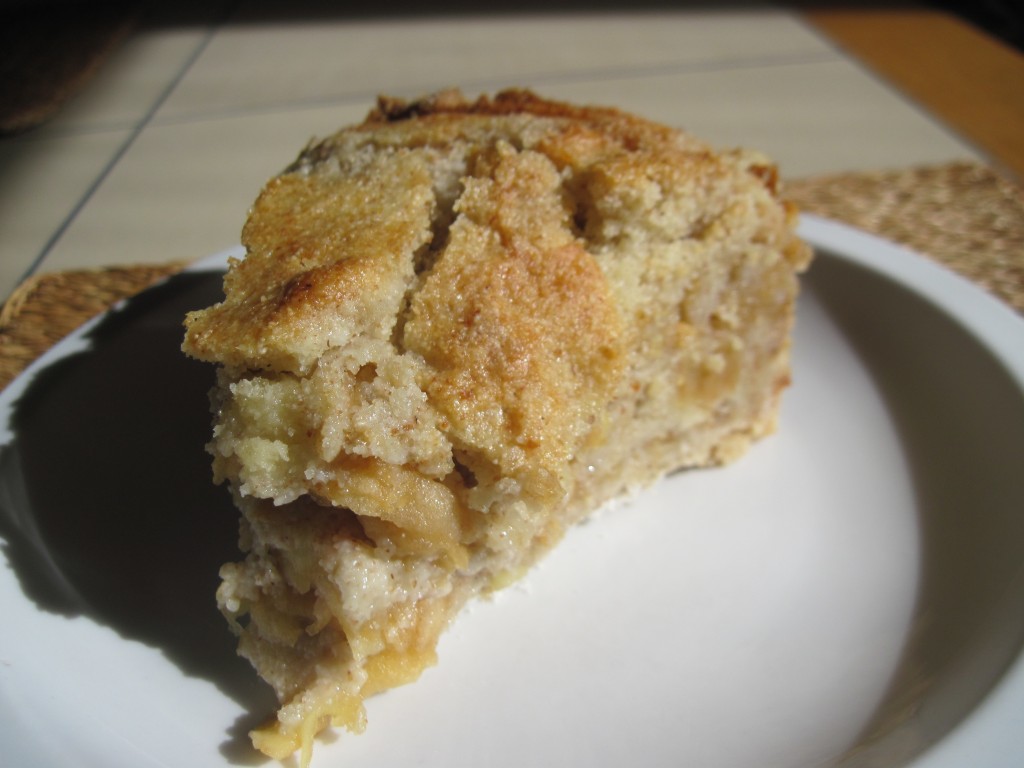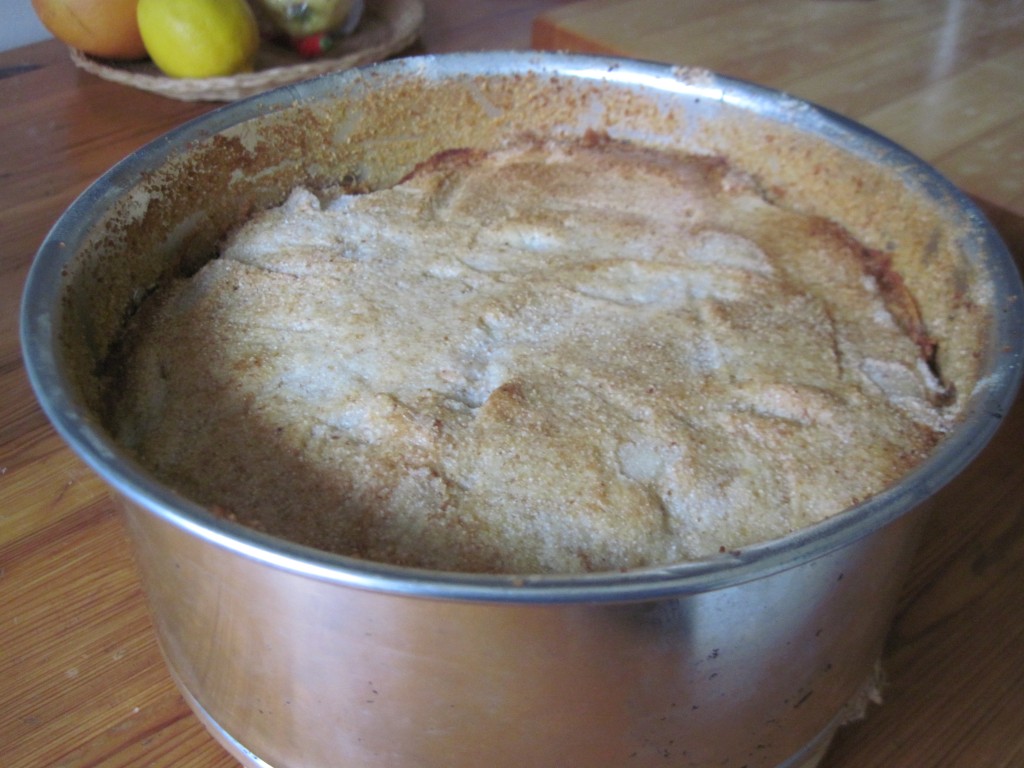Bardzo łatwa do zrobienia, bez jajek i mleka (jest masło!), bez robotów kuchennych!. Chrupka na wierzchu, wilgotna w środku – troszkę jak Kentucky Fried Chicken?
Szarlotka jest bardzo smaczna na ciepło. Jeśli zostanie, następnego dnia góra odrobinę mięknie i łatwiej ją pokroić. Może wtedy nawet lepsza?
Można pobawić się konstruując szarlotkę wielowarstwową (sypkie-jabłka-sypkie-jabłka-sypkie…) jeśli ambicja pogania. Może jeszcze lepsza? Więcej niż trzy-dwa może być troszkę ryzykowne, bo warstwa masła może na dno nie dotrzeć. Ale czy to ważne? Ktoś może odważnie spróbuje i da nam wszystkim znać.
Ta ma trzy warstwy sypkie i dwie warstwy jabłek:
Do mojej wysokiej tortownicy (22cm średnicy), przygotowałam
- 300ml mąki
- 300ml cukru
- 300ml kaszy manny
- łyżeczka proszku do pieczenia
- cynamon
- ok. 1,5 kg jabłek
- 100-150g masła na pokrywkę ciasta
- łyżka masła i łyżka bułki tartej (albo kaszki manny) do smarowania tortownicy
- Tortownicę wysmarowała masłem, posypałam bułką tartą.
- Cukier, mąkę, kaszę i proszek do pieczenia do pieczenia dokładnie wymieszałam w szklanym dzbanku z podziałką. Łatwiej mi z tego sypać w miarę równe trzy warstwy suchej mieszanki, pomiędzy warstwami jabłek. Można naturalnie kwestie dzielenia na trzy części traktować inaczej, wręcz ‘na oko’.
- Obrane jabłka utarłam na tarce o grubych oczkach.
- Nastawiłam piekarnik na 190C/375F.
- Łyżką rozsypałam na dnie pierwszą cześć (1/3) sypkich składników, potrząsałam delikatnie tortownicą, żeby sucha warstwa była w miarę równa.
- Na to połowę jabłek, delikatnie rozsmarowałam (wyrównałam) i posypałam odrobiną utartego cynamonu. U nas cynamon nie jest bardzo popularny, więc obchodzę się z nim ostrożnie.
- Na to druga warstwa sypkiego.
- Na to reszta jabłek.
- Na to pozostałą warstwę sypkiego.
- Wierzch szarlotki równomiernie przykryłam cienkimi plasterkami masła, tak żeby nie prześwitywała mąka z kaszą manną.

- Wstawiłam do piekarnika na około 45 minut (do zrumienienia)

Można dodatkowo każdą warstwę jabłek posypać cieniutko cukrem, a gotową szarlotkę oprószyć cukrem pudrem, alt to już tylko dla wyjątkowych sweet tooth creatures.